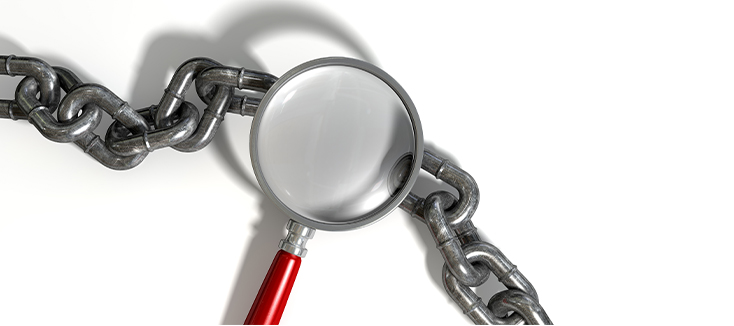Is a dedicated area for reprocessing important?
Reviewing potential process improvements in healthcare is becoming increasingly important when it comes to reprocessing of reusable medical devices. Hospitals must be pro-active and diligent in following current regulatory guidelines along with manufacturer's instructions for use (IFUs) for cleaning and sterilization. Commonly, reprocessing of semi-critical instruments is taking place in a centralized department for endoscopes and other surgical instruments.
For TEE ultrasound probes, many facilities have determined a better workflow for reprocessing by performing cleaning and high-level disinfection near the point of use. These facilities have established TEE high-level disinfection suites that meet the challenges of reprocessing the delicate TEE probe between uses. The reprocessing of a TEE probe requires a dedicated area that allows for care and control of the TEE ultrasound transducer as well as the handset and connector pack. This dedicated area and focused approach to TEE reprocessing helps to minimize probe damage from excessive handling, improperly trained central services staff and oversoaking.
What are the industry guidelines?
The standard document ANSI/AAMI TIR34 2014 Water for the Reprocessing of Medical Devices provides guidance to medical facilities to provide clean water for reprocessing of medical devices.
ANSI/AAMI TIR34:2014 states, "The objective of this TIR is to provide guidelines to personnel involved in medical device reprocessing on the quality of water that should be used in various stages of medical device reprocessing. It is also intended to provide guidelines to water service maintenance personnel on establishing and monitoring water treatment systems."1
Why is water quality important?
Water is a critical component in the reprocessing of semi-critical medical devices, whether manual or automated disinfection, it is something that should be considered by healthcare professionals. The rinse step, as identified by the FDA2, is an important step in reprocessing medical devices. While many reprocessing pieces of equipment have specific water requirements that should be followed, how many facilities focus on water quality for rinsing of medical devices? Most perform the rinse phase with little thought to the water quality and don't consider it a critical step in the reprocessing cycle.
How can rinsing impact patient outcomes?
Water can impact patient outcomes in device reprocessing and the life of medical instrumentation. We no longer have to just be concerned with improper disinfecting causing adverse patient outcomes. We also need to understand the impact of how improper water quality affects rinsing. Aging infrastructure is playing a role in the constantly changing landscape of potable water and presenting new challenges in healthcare facilities in the United States.
- Some examples:
- Instrument malfunction during a patient procedure, due to water deposits causing instrument damage, impacting the proper functionality of the instrument.
- Toxic effect and tissue irritation from residuals left on devices due to inadequate rinsing.
- Patient infection, from using contaminated device, due to cross contamination from rinsing in the decontamination sink and/or area.
- Patient infection, occurring from contaminated rinse water originating from waterborne pathogens, such as legionella or pseudomonas bacteria, growing in hospital piping infrastructure, an issue "commonly associated with buildings or structures that have complex water systems, like…hospitals," according to the CDC3.
What is the importance of rinsing with filtered water?
While utility (potable) water may be used for general reprocessing, it is critical that device manufacturer’s instructions be followed for appropriate rinse water recommendations. It is also critical to ensure you are following manufacturer’s instructions for equipment water recommendations e.g., washer decontaminators, automated endoscope reprocessors (AERs), etc., which may require the use of critical water for appropriate cleaning and rinsing. Should your washer/disinfector have filtered water that minimize or reduce the risk of waterborne bacteria, such as e-coli, cryptosporidium, pseudomonas or legionella, to rinse the high-level disinfected ultrasound probe?
According to ASHRAE 188-2015, a water management plan is essential, a minimum standard for your healthcare facility4. This will require you to actively identify and manage hazardous water conditions and maintain facility plumbing systems such as: cooling towers, decorative fountains, hot tubs, patient sinks and showers as well as other building water systems to minimize legionella and other harmful bacteria. Does your facility have a water management plan in place to prevent potentially harmful water from being used in medical device reprocessors or does the device have a filtration system?
How do you rinse the device safely?
Many industry professionals believe that decontamination of reusable medical devices are occurring in the Central Sterile Processing Department (CSPD) and that these centralized areas should perform cleaning, disinfecting and rinsing functions. However, it is important to identify all areas in the facility, including outpatient and clinic areas that perform these same functions. This is to ensure that the same standards that are adhered to in the CSPD for cleaning, disinfecting and rinsing are adhered to in the outlying areas and standardized.
A growing number of industry leaders now believe decontamination of devices/instruments should be taking place in a room separate from the clean processes, or have spatial separation. Although decontamination is a dirty area, it is important to have a designated flow from dirty to clean to prevent cross contamination. Rinsing after disinfection in the decontamination sink is a point of possible cross contamination; frequent cleaning and disinfection of sinks between cleaning of devices should be a routine process.
Today, it’s common to perform high-level disinfection, either manual or automated in the decontamination area. So how do you remove and rinse the device without recontamination? This is the biggest challenge for manual reprocessing today. When removing a device from manual high-level disinfection it must be rinsed and dried prior to storage and patient-use; if the high-level disinfection takes place in the decontamination area, where do you rinse the device without risking contamination? If you rinse in the decontamination sink you have re-contaminated the device, if you use a separate soak basin in the decontamination area the basin must be covered and the lid must be disinfected to prevent cross contamination through aerosolization. Manual reprocessing presents many risks that require a thorough risk management plan to minimize HAIs (Healthcare Acquired Infections). While most automated reprocessors have a rinse cycle, there is still a risk of recontamination if removing the device in the decontamination area. A wet TEE ultrasound probe should be properly dried, per manufacturers’ guidelines, once removed from the automated reprocessor and prior to storage or patient-use. QwikDry® irritated ultrasound drying cloths are an example of a drying method that will effectively remove moisture from the TEE probe without sticking or scratching the probe.
How can HAIs be challenging?
- HAIs are a major challenge for healthcare organizations:
- HAIs cost the U.S. up to $147 billion annual in direct and indirect costs5
- Up to 70% of HAIs are preventable using existing infection prevention strategies6
- One of the top 5 non-compliance findings by The Joint Commission is the failure to reduce the risk of infections associated with medical devices or equipment7
CS Medical's solution for filtered rinse water
"The optimal rinse fluid for this device would be sterile water; however, sterile water is expensive and difficult to produce in sufficient quantities. If sterile water is not feasible, water that has been passed through filters with a minimum pore size of between 0.1 – 0.2 microns would be essential as a rinse fluid for this device."8
Waterborne bacteria are an ever-growing challenge in healthcare facilities. The effects of these contaminates continue to cause an increasing rise in healthcare costs. Rinse water quality can affect a properly high-level disinfected medical device by introducing bacteria, viruses and endotoxins. CS Medical has partnered with Nephros, Inc. to deliver an FDA cleared solution that provides ultrapure bacteriologically-filtered water during all five rinse cycles of the TD 100® Automated TEE Probe Disinfector. The Nephros DSU-H filter is a patented, dual-stage, hollow-fiber ultrafilter that retains bacteria, viruses, and endotoxins found in water. All filtration occurs in the first stage of the filter while the second stage serves as a redundant safety filter. The Nephros DSU-H filter accomplishes this with a pore size of 5 nanometers (.005 micron), which is 40 times smaller than a common sub-micron (0.2 micron) filter. The water permeability of the DSU-H membrane is more than double that of membranes with comparable pore size, thus providing efficient flow performance relative to the physical size of the filter.
The Nephros DSU-H filter is easily installed within the water circuit of a typical TD 100 installation. The filter provides up to 6 months of useful life and retains bacteria, viruses and endotoxins.
1 ANSI/AAMI TIR34 2014 Water for the Reprocessing of Medical Devices - Electronically accessed: https://www.aami.org
2 Electronically accessed: Reprocessing Medical Devices in Health Care Settings: Validation Methods and Labeling
3, 7 Electronically accessed: Guidelines for Environmental Infection Control in Health-Care Facilities
4 Electronically accessed: Legionellosis: Risk Management for Building Water Systems
5 Electronically accessed: https://www.cdc.gov/HAI/surveillance/ August 25, 2014.
6 Electronically accessed: Guideline for Disinfection and Sterilization in Healthcare Facilities, 2008
8 Electronically accessed: Guidelines for Environmental Infection Control in Health-Care Facilities


